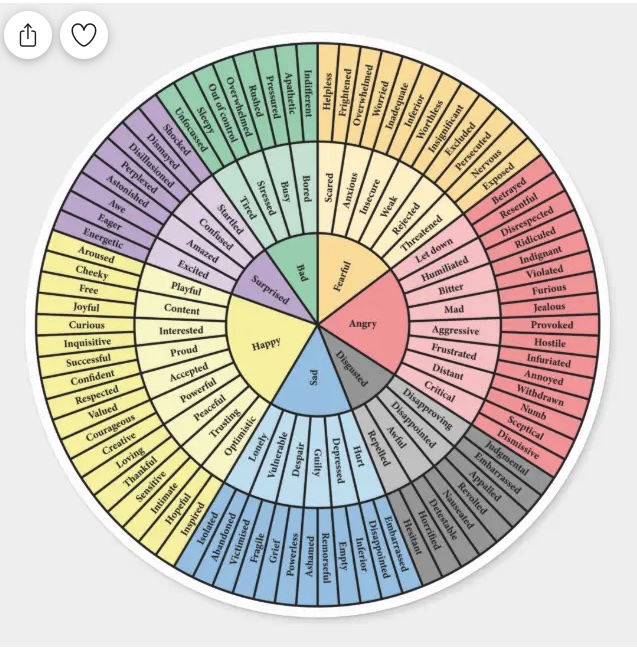Over the years I’ve heard the phrase, “You’ve got to feel your feelings,” so many times I could choke. It’s a popular phrase now, way extended beyond mere psychology and coaching circles. It’s almost as common as “living your best authentic life,” which also elicits an eye roll from me.
How we hide from our feelings
Feeling your feelings sounds simple, but most of us have no real understanding of how to do it. And the guidance out there on this front is hazy at best. A lot of this has to do with the fact that we don’t often have good role models on this front. I’m reminded of that 70’s musical classic, “Don’t cry out loud.” Words, unfortunately, that many of us have decided to live by. Furthermore, most of us think we are feeling the difficult emotions when they come up, but we’re really not. We’re fooling ourselves. This is because when difficult emotions do arise, the fight or fight mechanism gets triggered, our amygdala gets hijacked and rather than do the hard work of leaning into the actual feeling, we lean unconsciously instead into a coping mechanism, which could look something like one of the following options:
- We try to out-think it. We’re often over identified in our heads, trying to understand the emotion and why it’s making us crazy in a desperate attempt to eliminate it. We obsess and ruminate about it which perpetuates it and keeps us in a state of spin, panic and anxiety. “If I could just figure this out, then it would go away!” It won’t by the way.
- We try to ostrich technique. We compartmentalize and shove the emotion down as deep as we can so we can’t experience it. We do this by keeping ourselves as busy as possible, rushing from one task to the next at lightning speed. I have a friend who utilizes this technique. From what I can tell she barely sleeps; her days are so jam packed with I don’t know what.
- We dunk our head in the shame shower. Or we judge the emotion and tell ourselves it’s ridiculous and we shouldn’t be feeling what we are feeling (we shame it), or that our interpretation is incorrect. Which often makes it worse. In my experience the judgment and covert shaming only keeps it at bay for a while. Plus it makes a person feel like crap. And eventually the emotion comes out sideways, maybe as passive aggressive resentment. A subtle but nasty dig here or there. Or maybe it eventually blows one day like Mount Vesuvius. Boom!
So, what to do instead?
The answer to how to feel your feelings lies is understanding what your default tendencies are and making a conscious choice to do something different.
- Identify what you’re feeling – The reason for this isn’t to play the name game with emotions, but to acknowledge for yourself the experience you’re having. There is a huge amount of vulnerability in acknowledging our emotions. When we do so, we open the possibility up for looking at ourselves with a compassionate and loving heart. The other day I was feeling some heavy stuff, but I couldn’t figure out what was wrong. It was only when I recognized that one of the emotions at play was loneliness that things started to click and I could finally show myself some much needed grace. You might try using an emotional intelligence worksheet that contains a list of emotions, or a wheel like the below.

2. Say yes to the emotion – Pat Rodegast (representing the teachings of Emmanuel) writes, “So walk with your heaviness, saying yes. Yes to the sadness, yes to the whispered longing. Yes to the fear. Love means setting aside walls, fences, and unlocking doors, and saying yes … one can be in paradise by simply saying yes to this moment.” The instant we agree to feel fear or vulnerability, greed or agitation, we are holding our life with an unconditionally friendly heart. We are accepting the present moment as it is.
3. Connect with the feeling in your body – Is it nervousness in the pit of your stomach? Is it anger and frustration in your forehead or shoulders? Is it sadness and grief that hangs heavy in your heart? Connect with the feeling in your body, lean into the experience of it and breathe deeply as you allow yourself to experience it. I find that once I’ve connected at this level the experience of the emotion typically passes rather quickly and it feels almost as if it’s moving through my body.
4. Show yourself loving compassion – I find it’s sometimes helpful to whisper out loud, “I’m feeling scared right now and it’s okay. I’m feeling resentful right now and it’s okay.” The trick here is to acknowledge what’s happening with loving compassion towards yourself, not to make the emotion go away. The only way it will go away is once you’ve accepted it fully and embrace the sensation.
Coaching questions for thought:
- Which of the default coping tendencies is your go to?
- Where in your body do you tend to feel difficult emotions?
- What would compassion for yourself look like as you feel the difficult emotions you’d rather not feel?
Shelley Pernot is a leadership coach who is passionate about helping her clients discover their strengths and talents and step into their greatness. Reach out to me here for a free consultation to learn more about the coaching process and how it may benefit you!

